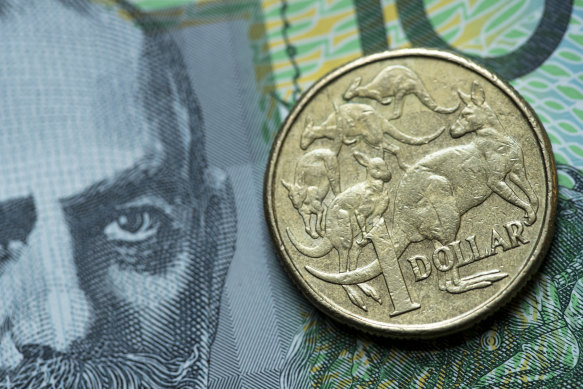The Reserve Bank of Australia will trial a digital currency in a “ring-fenced” pilot program as part of a year-long collaborative research project into how it could be used by consumers and businesses.
Australia’s central bank has previously declared its interest in digital currency, which could be a digital equivalent of the dollar and rival privately minted cryptocurrencies, but the research project announced by the bank on Tuesday with the Digital Finance Cooperative Research Centre would focus on how such an asset could actually be used.

The research centre’s chief executive Andreas Furche, whose organisation is a product of industry, university and government collaboration, said it had already been proven that a central bank digital currency was technically feasible. “The key research questions now are what economic benefits a CBDC (central bank digital currency) could enable, and how it could be designed to maximise those benefits,” Furche said.
In a media release, the Reserve Bank said previous research from central banks around the world had gone into questions such as how the distributed ledger technology that is a hallmark of cryptocurrencies could be used for an RBA-backed currency.
But Michele Bullock, the RBA’s deputy governor, said Tuesday’s project was the next step in its research. “We are looking forward to engaging with a wide range of industry participants to better understand the potential benefits a CBDC could bring to Australia,” Bullock said.
The project would involve a “ring-fenced environment” in which a pilot digital currency would be used that had a real claim on the Reserve Bank. Participants selected by the bank and research centre will develop projects that demonstrate how the digital currency could be used to assist businesses and households within that framework. A report will be published at the end.

In June, the Bank for International Settlements (BIS), which facilitates cooperation between central banks, labelled Bitcoin and other cryptocurrencies as speculative assets of interest to organised criminals that were a huge waste of energy.
But the BIS said institutions such as the RBA should consider their down digital currencies.
Its research suggested central bank digital currencies could be designed to give users, including ordinary banking customers, much more control over their private data. It noted this data could have “immense economic value” that currently goes to private banks and financial tech firms which make money from it.
RELATED ARTICLE

End of the dollar as we know it? RBA suggests digital tokens are on the money
The BIS also found central bank digital currencies could provide competition to private payment providers, that include commercial banks, and help drive down costs facing customers.
Earlier this year, RBA governor Philip Lowe signalled a digital Australian dollar was increasingly likely.
He said technology had historically shaped the use of money, noting that silver and gold had given way to paper which in turn had given way to polymer notes in Australia.
However, there are concerns in some private banking circles that an RBA digital currency could destabilise the financial system. They believe it could make it easier for a bank run to occur as people withdraw their deposits from commercial banks to hold a central bank-backed digital currency during a crisis.
Privately minted cryptocurrencies have fared poorly this year, with even some that are intended to be pegged stably to the US dollar being wiped out.
Part of the research project will consider regulatory, technical and legal issues associated with a central bank digital currency.
China and the Bahamas’ central banks have both explored the use of a digital currency, with the use of the e-CNY being gradually expanded.
Source – https://www.smh.com.au/technology/rba-to-trial-a-digital-currency-20220809-p5b8cp.html
